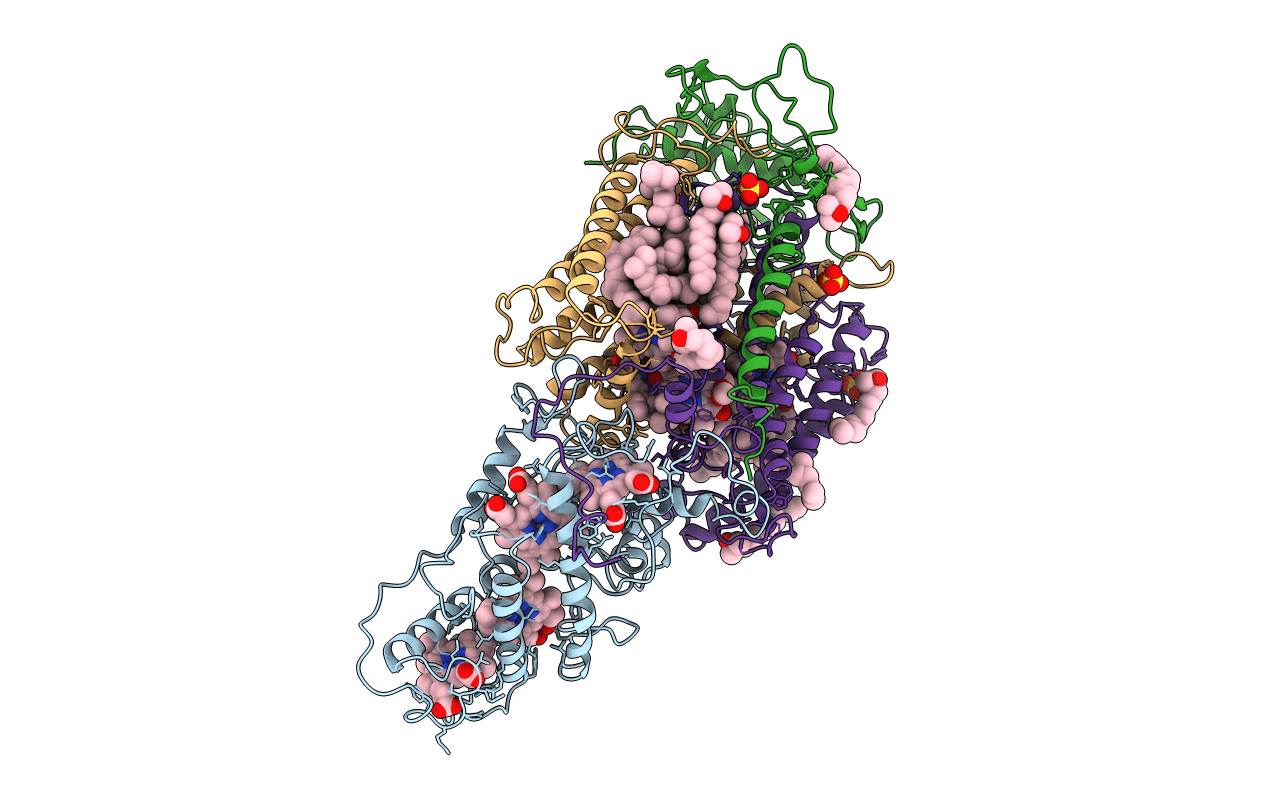
Deposition Date
1997-08-01
Release Date
1999-04-06
Last Version Date
2024-10-23
Entry Detail
PDB ID:
7PRC
Keywords:
Title:
PHOTOSYNTHETIC REACTION CENTER FROM RHODOPSEUDOMONAS VIRIDIS (DG-420315 (TRIAZINE) COMPLEX)
Biological Source:
Source Organism:
Blastochloris viridis (Taxon ID: 1079)
Method Details:
Experimental Method:
Resolution:
2.65 Å
R-Value Free:
0.23
R-Value Work:
0.18
R-Value Observed:
0.18
Space Group:
P 43 21 2


